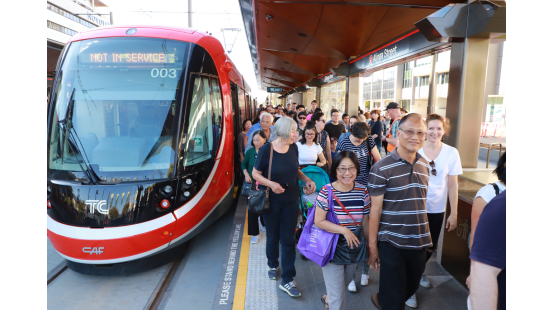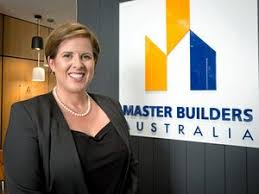CIMIC GROUP companies Pacific Partnerships, CPB Contractors and UGL, as part of the Canberra Metro consortium, will finance, design, build and operate the next stage of Canberra’s ‘world class’ light rail system, dubbed Stage 2A, from the city to Commonwealth Park.
The Canberra Light Rail Stage 2A project is jointly funded by the Federal Government and the Australian Capital Territory (ACT) Government. Canberra Metro was awarded the $577 million contract following a single select procurement process, generating revenue of about $227.5 million for CPB Contractors and UGL.
The Stage 2A ‘catenary free’ – or wireless – extension will be delivered under Canberra Metro’s existing public private partnership (PPP) with the ACT Government.
“The commitment made today in signing this contract represents a significant investment in Canberra by both governments,” ACT Chief Minister, Andrew Barr said. “It is an example of how the National Capital Investment Framework will result in ongoing investment in our infrastructure.”
This is the third Canberra Light Rail package for Canberra Metro, which includes CIMIC’s Pacific Partnerships (sponsor and equity funding), CPB Contractors (design and construction) and UGL (operations and maintenance).
Following on from the initial Stage 1 of the network (city to Gungahlin), Canberra Metro is currently delivering five additional light rail vehicles with onboard energy storage batteries to allow wireless operation, and an expansion of the existing depot.
The project is the next important step in taking light rail all the way to Woden. Canberra Metro funded the PPP finance contribution for the new Stage 2A 1.7km extension through an innovative green loan that recognises the project’s carbon reduction benefits – with Stage 1 operating on 100 percent renewable electricity.
The design and construction scope of work includes delivery of three new stops at Edinburgh Avenue, City South and Commonwealth Avenue, with construction due to start in January 2024 for a four-year duration.
“Canberra Light Rail’s progressive stages are modernising the city’s public transport system, connecting residential areas with employment centres and social and cultural hubs,” CIMIC Group executive chairman Juan Santamaria said. “We are proud to apply the group’s light rail expertise to deliver a convenient and environmentally friendly transport option for Canberrans.”
Pacific Partnerships managing director Simon Nicholls said: “Having been personally involved since the start of Stage 1, I am very pleased that our enduring partnership with the Federal and ACT Governments and Canberra Metro will continue to successfully connect Canberra.
“Our lifecycle approach within the PPP model has proven highly successful. Canberra Metro has mobilised a sustainable finance solution, a reliable delivery contractor and the experienced operations team necessary for a long-term light rail service focused on serving community needs.”
CPB Contractors managing director Jason Spears said: “CPB Contractors is delighted to continue our work to deliver the Canberra Light Rail, which will improve the everyday lives of residents and attract more visitors to the city.
“We are proud to leverage our 70-year history in delivering transformational rail projects across Australia, while we continue to ensure we are maximising training and job opportunities for local people and economic prospects for local suppliers.” Mr Spears was referring to two of the heritage companies of CPB Contractors, Leighton and Thiess.
UGL managing director Doug Moss said, “UGL is involved in more than 150 million passenger journeys across Australia and New Zealand each year, which will grow with the addition of Canberra Light Rail Stage 2A.
“Canberrans have embraced Stage 1 since operations started in 2019, with a service frequency reliability of at least 99.9 percent, delivering services every 5-6 minutes in peak and 10-15 minutes in off-peak.”
www.cimic.com.au
ends


 How to resolve AdBlock issue?
How to resolve AdBlock issue? 



